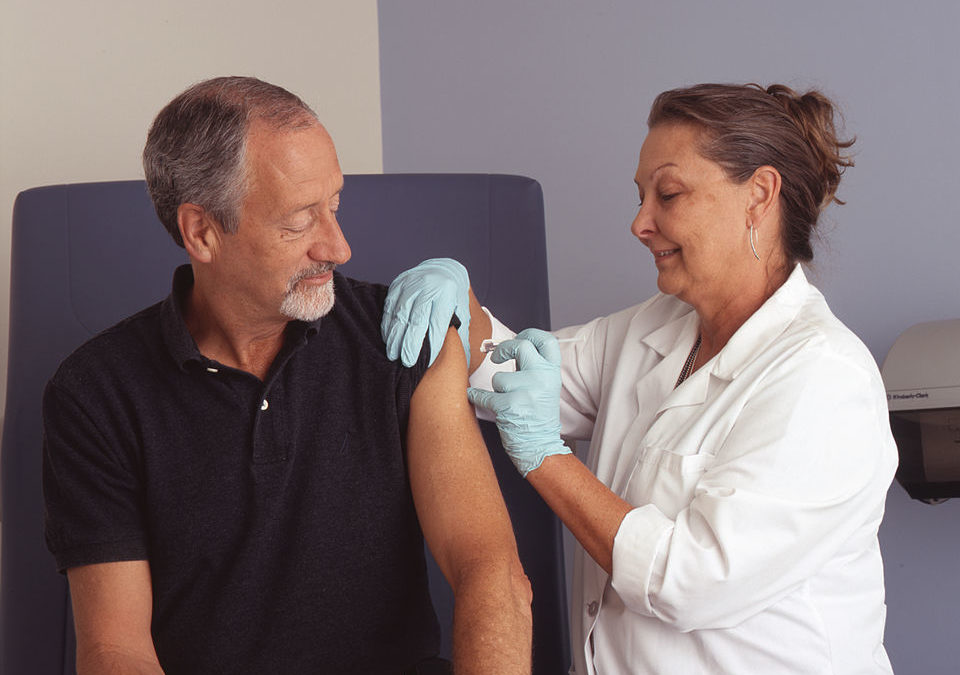
First-in-humans clinical trials of vaccines:
Best practices, regulations and need of regulations
MARIA HAIDER, MBBS, CCRP
Medical Advisor, CRA School
The responsibility for the quality, safety and efficacy of the vaccines lies first and foremost with the manufacturer. The National Regulatory Authorities (NRA) in each country establish procedures to ensure that products and manufacturers meet the established regulatory criteria.
WHY ARE THE REGULATIONS IMPORTANT ? CAN’T THEY BE RELAXED SUFFICIENTLY IN TIMES OF NEED ?
The history can give us answers to these questions. Vaccine are a very important pharmaceutical product. They are characterized by complex manufacturing processes and are administered to large numbers of healthy children, adolescents and adults. History has examples in which vaccines lacking regulations and good manufacturing processes have done more harm than good, although these incidences are rare.
For example, in 1955, insufficiently inactivated batches of polio vaccine caused an outbreak of polio due to the presence of wild-type poliovirus strains. This became known worldwide as the Cutter incident, in which 40,000 children developed mild polio, 200 were permanently paralyzed, and 10 died.
Another example is ” an aggravated or atypical disease following vaccination and exposure to wild-type viruses caused by a measles and respiratory syncytial virus, or experimental severe acute respiratory syndrome (SARS) vaccine”
The quality of a vaccine cannot be assessed solely by testing the final product alone. It is recommended that NRAs establish a specific regulatory system for vaccines.
The NRA must first set requirements for applicants to comply with. These requirements include the following:
- information needed for the application.
- evidence that the vaccine has passed the stages of research, development,
- production and quality control, evidence from clinical testing,
- evidence that the vaccine’s quality, safety and efficacy has been established
- manufacturing facilities must comply with Good Manufacturing Practices (GMP)
THE GOOD MANUFACTURING PRACTICES ARE IMPORTANT FOR A LOT OF REASONS
- first, vaccines often present an antigen in an artificial context (that is, as repetitive structures, such as in virus-like particles, as fragments of epitopes, or as capsules)
- second, in many cases, vaccines are administered together with an adjuvant that enhances or modulates the immune response
- third, vaccines provide an antigen dose that is both different from that seen in a natural infection and most times presented to the immune system by a different route
- Another aspect that must be considered is that vaccines are biological products. As such, even small changes to the established manufacturing processes may significantly alter product safety and/or efficacy
Currently the World Health Organization (WHO) has the following guidelines and requirements that are relevant to the evaluation of vaccines:
(1) Good Manufacturing Practice (GMP) for pharmaceuticals
(2) GMP for biologicals
(3) Regulation and licensing of biological products in countries with newly developing regulatory authorities
(4) Guidelines for national authorities on quality assurance for biological products
(5) Guidelines and recommendations for the production and control of specific vaccines
(6) Good Clinical Practice (GCP) for trials on pharmaceuticals products
REGULATIONS ON VACCINES
The regulations on vaccines can be divided into three stages:
- Developmental (preclinical research and development, and clinical research and development.)
- Licensure
- Post licensure
- PRECLINICAL EVALUATION OF VACCINES
Preclinical evaluation of a vaccine is a prerequisite to the initiation of clinical trials. In all cases, when preclinical animal testing is performed, there should be a clear rationale for doing so, and the study should be performed in compliance with the Good Laboratory Practice (GLP) guidelines and with the National Guidelines on animal experimentation
PRODUCTION, CHARACTERIZATION AND QUALITY ASSURANCE OF CANDIDATE VACCINES
WHO guidelines and recommendations are often adopted by NRAs as definitive national requirements. The amount of data needed to support clinical studies should increase throughout phase I and II, and product characterization should be completed by the beginning of phase III stage of development
Analytical criteria should be established during product development and used subsequently to evaluate new batches and to establish batch-to-batch consistency
Candidate vaccines for clinical trials should be prepared under conditions of Good Manufacturing Practices.
Any change in the formulation of a vaccine should be considered carefully both by manufacturers and NRAs. Some changes in the formulation may have extremely high impact on the quality, safety and efficacy of vaccines and will require clinical trials.
In accordance with GCP, a sufficient number of samples of each batch of the candidate vaccine must be kept for future reference by the manufacturer together with a record of analyses and characteristics
TOXICITY AND SAFETY TESTING
Toxicity studies in animals may be considered to assess the potential toxic effects of a vaccine in target organs, including the hematopoietic and immune systems as well as to assess systemic toxicity. Toxicity studies may help to identify potential toxicity problems requiring further clinical monitoring.
POTENCY AND IMMUNOGENICITY
Potency: Where relevant, potency tests should be established during vaccine development and used for routine batch release. Examples of potency assays are challenge models, such as intracerebral mouse test for pertussis and rabies vaccines, and evaluations of infectious units of live attenuated organisms for viral vaccines and BCG.
Immunogenicity: Immunization of animals with candidate vaccine preparations should be undertaken since the data obtained will provide valuable information to support a clinical indication
SPECIAL CONSIDERATIONS
Adjuvants: It is important that the adjuvants used comply with pharmacopoeial requirements where they exist.
Additives: Where a new additive such as a preservative or excipient is to be used, the safety of the material needs to be investigated and documented.
2. CLINICAL EVALUATION OF VACCINES
All clinical trials should adhere to standards, described in the Good Clinical Practices. WHO Guidelines for Good Clinical Practices is already in place for trials of pharmaceutical products and these general principles apply also to vaccine studies. However, vaccine studies have special aspects, which demand special consideration such as:
- Vaccines are given to healthy individuals, mostly in the paediatric population
- Vaccines are given to prevent disease, which thus limits the tolerance to adverse events
- Vaccines are biological products, which are highly complex substances derived from living materials, and sometimes comprising of living organisms, requiring specialized assays and testing to assure their quality and safety on a lot-to-lot basis.
Manufacturing consistency for vaccine lots used in the clinical trials should be demonstrated and well documented.
METHODOLOGICAL CONSIDERATIONS
Methodological considerations are vital to the outcome of all clinical studies and very careful consideration should be given to this aspect during the trial design stage.
Study population
- At least the initial Phase I study is usually conducted in healthy, immunocompetent adults
- Phases II and III the trial population should be chosen to represent the group that will be the target for the vaccination in an immunization program.
- If a vaccine is intended for children or other vulnerable populations, the vaccine should be tested in small number of intended population, usually following at least one Phase I study in healthy adults, but before proceeding to a larger number of the intended population.
Inclusion and exclusion criteria for the enrolment in the trial
Subjects included in the trial should be in the required age group, with a residence within the defined study area(s) during selection, examined by the study physician, and with a signed informed consent (in a case of children, parental or guardian consent).
Previous vaccine and antigen exposure should be recorded for all participants
Exclusion from the trial should be made for subjects, who do not meet the medical or other eligibility criteria for entry into the trial, such as chronic illness with signs of cardiac or renal failure, suspected progressive neurological disease, uncontrolled epilepsy/ infantile spasms, or other vaccinations within one or two weeks of administration of the test vaccine, and long term treatment with antibiotics.
Criteria should also be established for contraindications to administration of a subsequent dose (2nd or 3rd) of vaccine, if applicable. These might include serious reaction after the first/second dose (e.g. neurological reaction), fever equal/greater to 40°C within 48 hours, generalized allergic reaction within 48 hours
Sample size: The sample size in a vaccine efficacy trial should be large enough to allow precise interval estimation of efficacy.
Duration of study : In most confirmatory clinical trials this implies a follow-up period of at least 6 months subsequent to the last vaccination.
For vaccines intended for use in immunization programs, follow-up should be at least 1 year following the last vaccination
ETHICAL CONSIDERATIONS
The WHO GCP guidelines, which describe the clinical standards and ethical issues to be considered in the design and conduct of vaccine trials, should be followed. Compliance with GCP standards provides assurance that the rights, safety and well being of trial subjects are protected, in accordance with the principles that have their origin in the Declaration of Helsinki
Subjects in vaccine trials should not be exposed to unreasonable and important risks of illness or injury and measures should be in place to ensure that all are given the full benefits of scientific innovation
It is important to ensure that economically and socially deprived communities, which are often at the greatest risk of disease, are not exploited in research that will be of no benefit to them.
PHASE I STUDIES
Phase I studies should be undertaken to define acceptable safety and reactogenicity of a vaccine candidate as well as preliminary information on its immunogenicity
PHASE II STUDIES
Phase II studies should be undertaken to evaluate multiple variables associated with the host immune response such as age, ethnicity, gender, presence of maternal or pre-existing antibodies. Other factors to be evaluated are: 1) dose of vaccine 2) interval of vaccinations 3) number of doses 4) route of administration
For a live attenuated vaccine, continued specific active monitoring into the second and third week, or more, post vaccination is recommended.
The percentage of responders should be defined and described based on predefined criteria for immune response (e.g., antibodies and/or cell mediated immunity).
PHASE III STUDIES
The Phase III trials are large-scale clinical trials designed to provide data on vaccine efficacy and safety.
These studies are usually performed in large populations to evaluate efficacy and safety of formulation of the immunologically active component.
Vaccine efficacy is the percentage reduction in the incidence rate of disease in vaccinated compared to unvaccinated individuals.
Trial design: There are 2 types of efficacy studies:
- i) experimental studies ii) observational studies
The gold standard for assessment of prevention of disease/ infection in a phase III trial is the prospective randomized double-blind controlled trial
General considerations for Phase III efficacy trials
Size of trial: A vaccine efficacy trial may be based on clinical endpoints, incidence of the infection (as in the case of HIV) or, if they exist, immunological correlates of protection. Efficacy trials based on clinical endpoints often require large sample sizes
Choice of controls: can be placebo or an active comparator
Correlates of protection: prevention of disease is used as an endpoint.
A commonly used measure of population-based correlates of protection requires the identification of a level of antibody that is achieved by the majority of a protected group (i.e. vaccinated) and not achieved by the majority of a susceptible group (i.e. unvaccinated)
Duration of protection and need for booster vaccinations: When efficacy trials have been done, controlled follow-up of the entire, or a subset of, the study population, which may be into the post-licensure period, provides the best opportunity to define with confidence the serological correlate(s) of protection and the need for and timing of booster vaccination.
Serious adverse events: Prior to licensure, both the applicant and the regulatory authority need to consider whether ADR reports raise sufficient concern, that either there should be a suspension of product development, or whether additional clinical safety studies may be needed to confirm the relationship between the vaccine and the event, and to establish more rigorously the incidence.
3. POST LICENSURE STUDIES AND SURVEILLANCE
The purpose of post-marketing surveillance and studies is to monitor the performance of a vaccine in the large target population under conditions of routine use. The design and/or planning of a PMS program requires assessment of:
- impact of the target disease (morbidity, mortality)
- epidemic potential: whether the disease is a specific target of a national, regional or international control program
- whether the information to be collected will lead to significant public health action.
PMS is based on criteria for quality, safety and efficacy set for a particular vaccine for marketing approval
Safety evaluation: Post-marketing surveillance may be the only means of detecting long-term or acute events, that occur too infrequently to have been revealed in clinical trials
Vaccine effectiveness evaluation. Vaccine effectiveness measures direct and indirect protection (e.g. protection to non-vaccinated persons by the vaccinated population-herd immunity
Monitoring of post marketing surveillance: A post-marketing oversight policy should be established by a National Regulatory Authority for
i) control of product release, ii) periodic inspections, iii) reporting mechanisms, iv) recall of batches
v) revoking marketing approvals, vi) approval of manufacturing changes and evaluation and approval of new indications
Post marketing surveillance and studies may be conducted to investigate:
- the optimal use of a vaccine
- Efficacy in certain risk groups
- Maintenance of long-term efficacy and monitoring of long term safety


